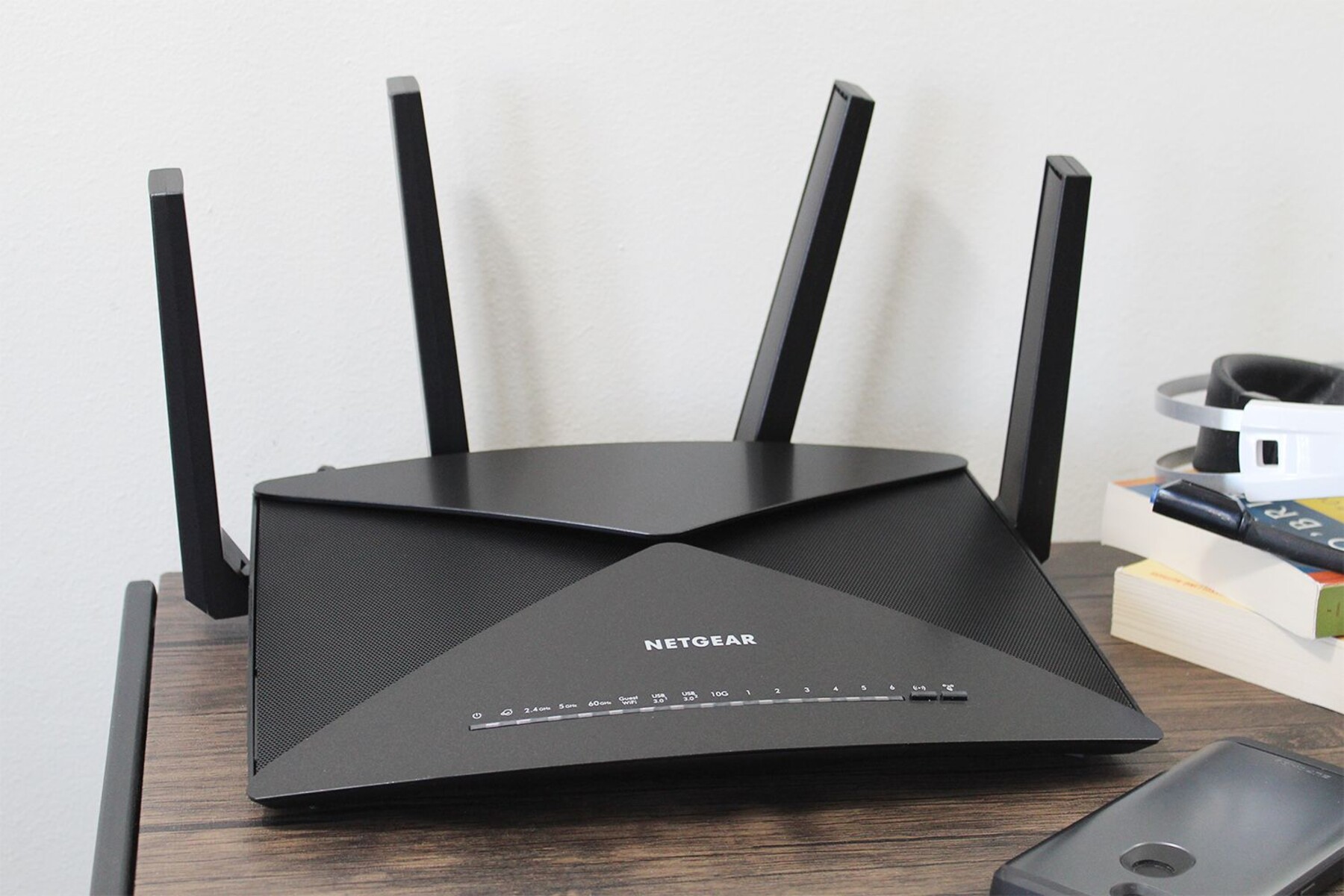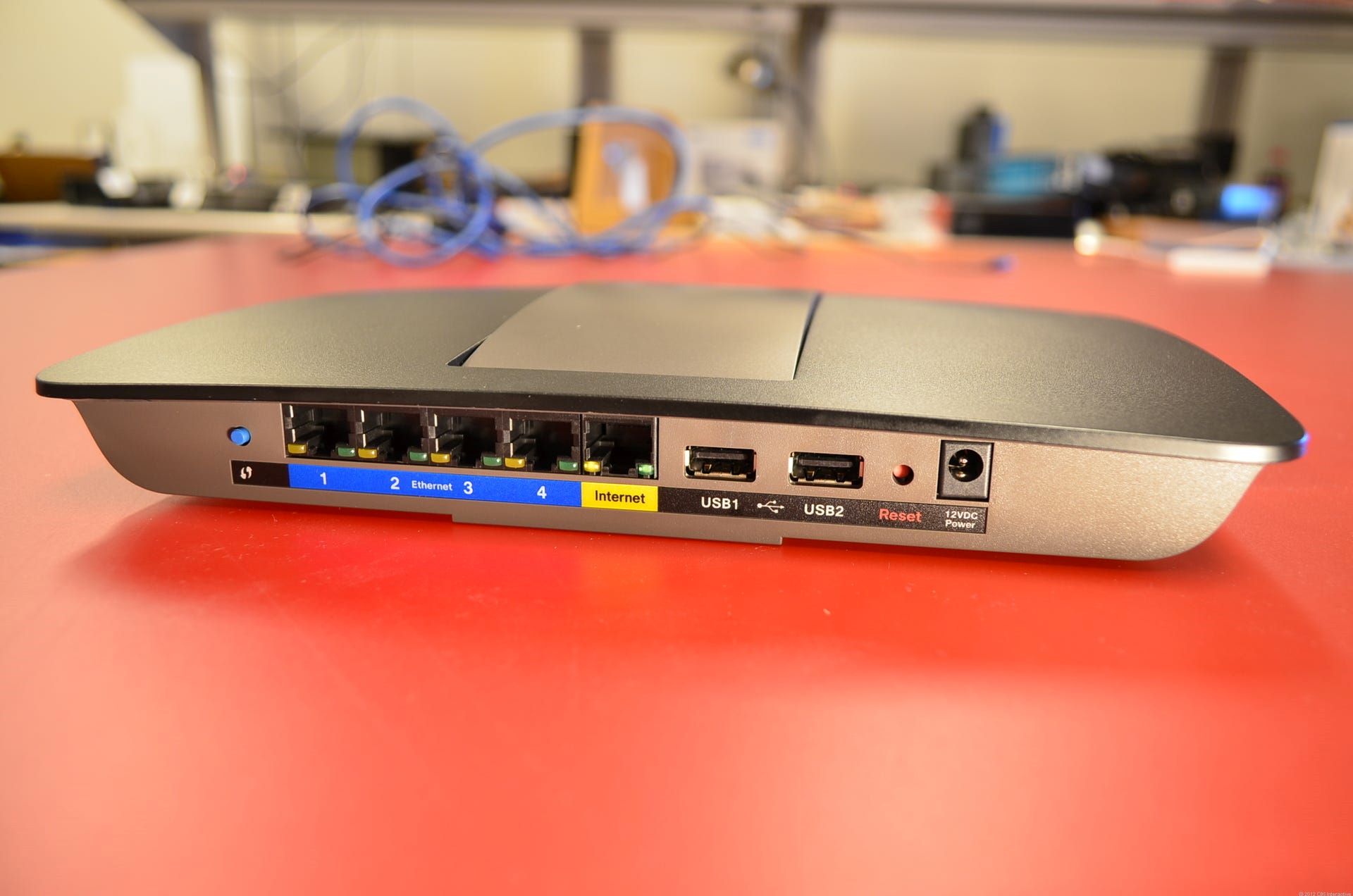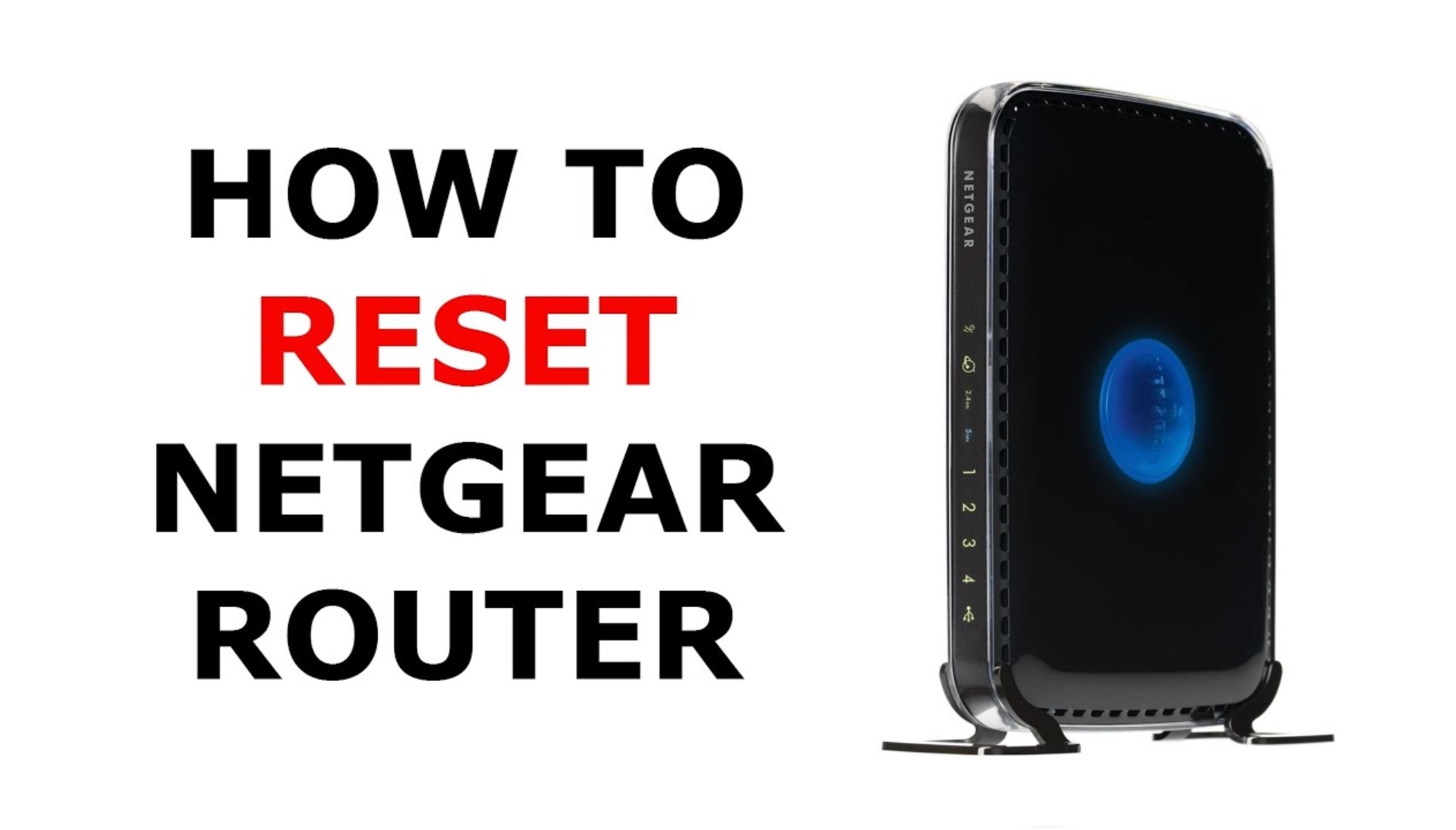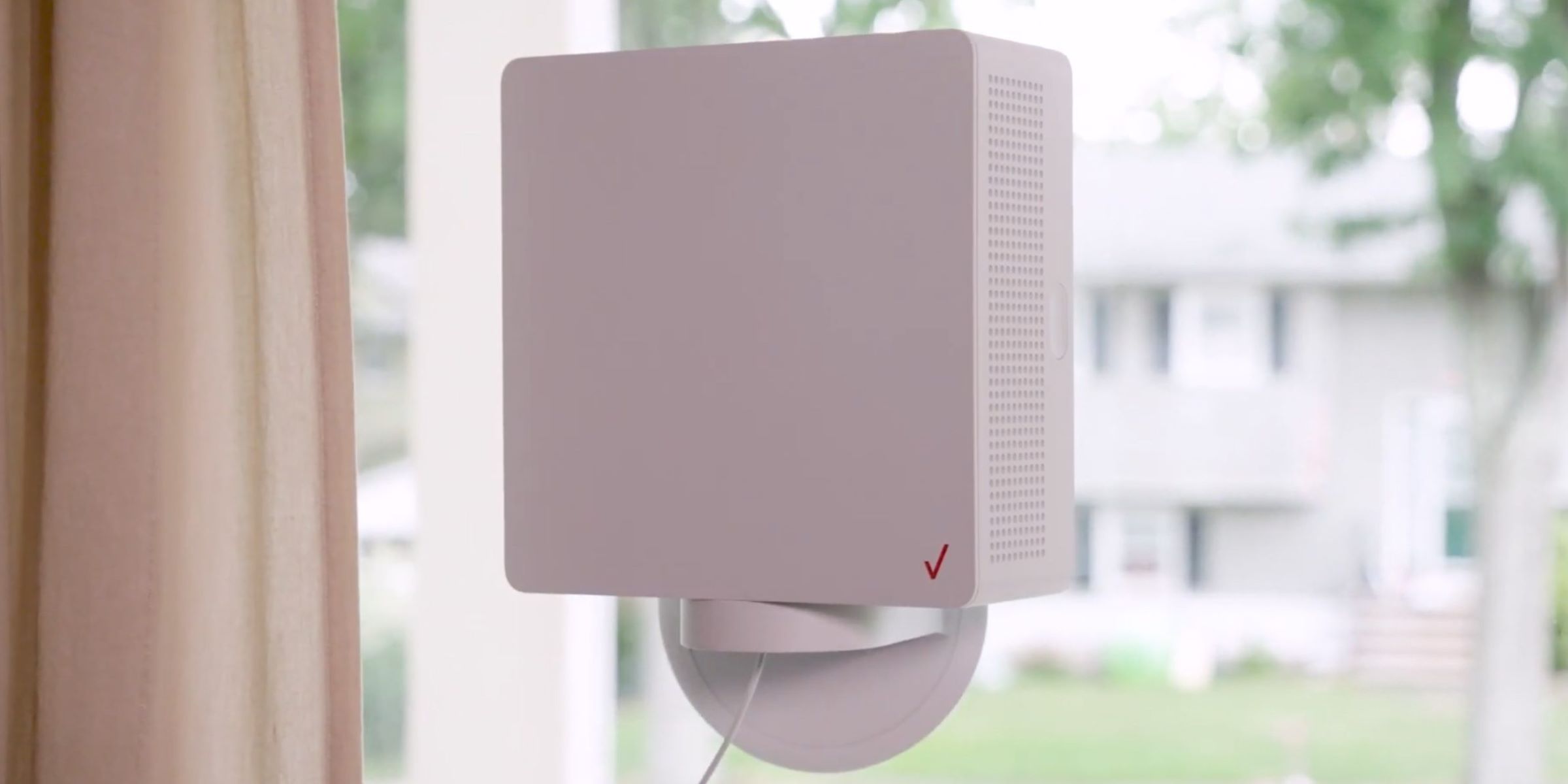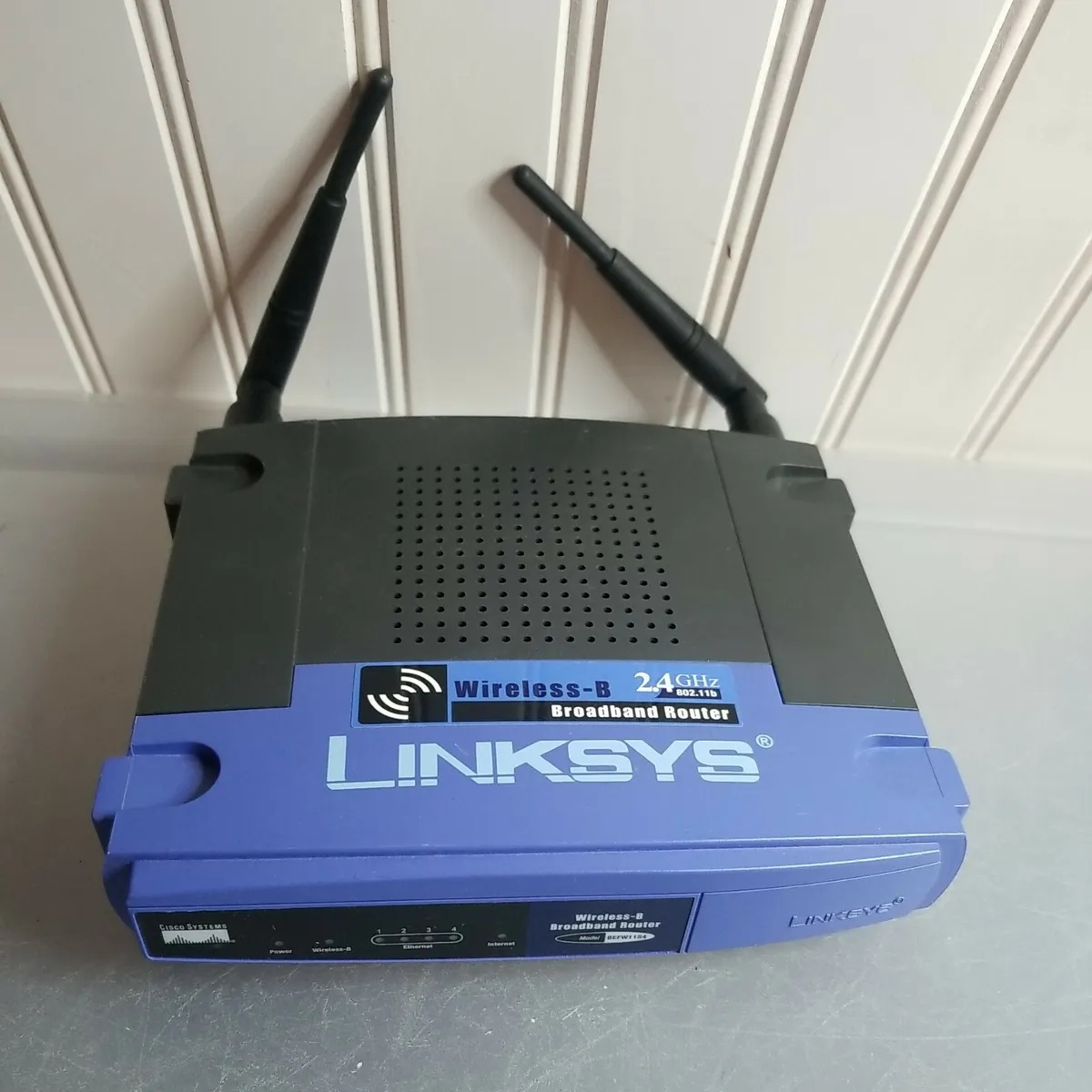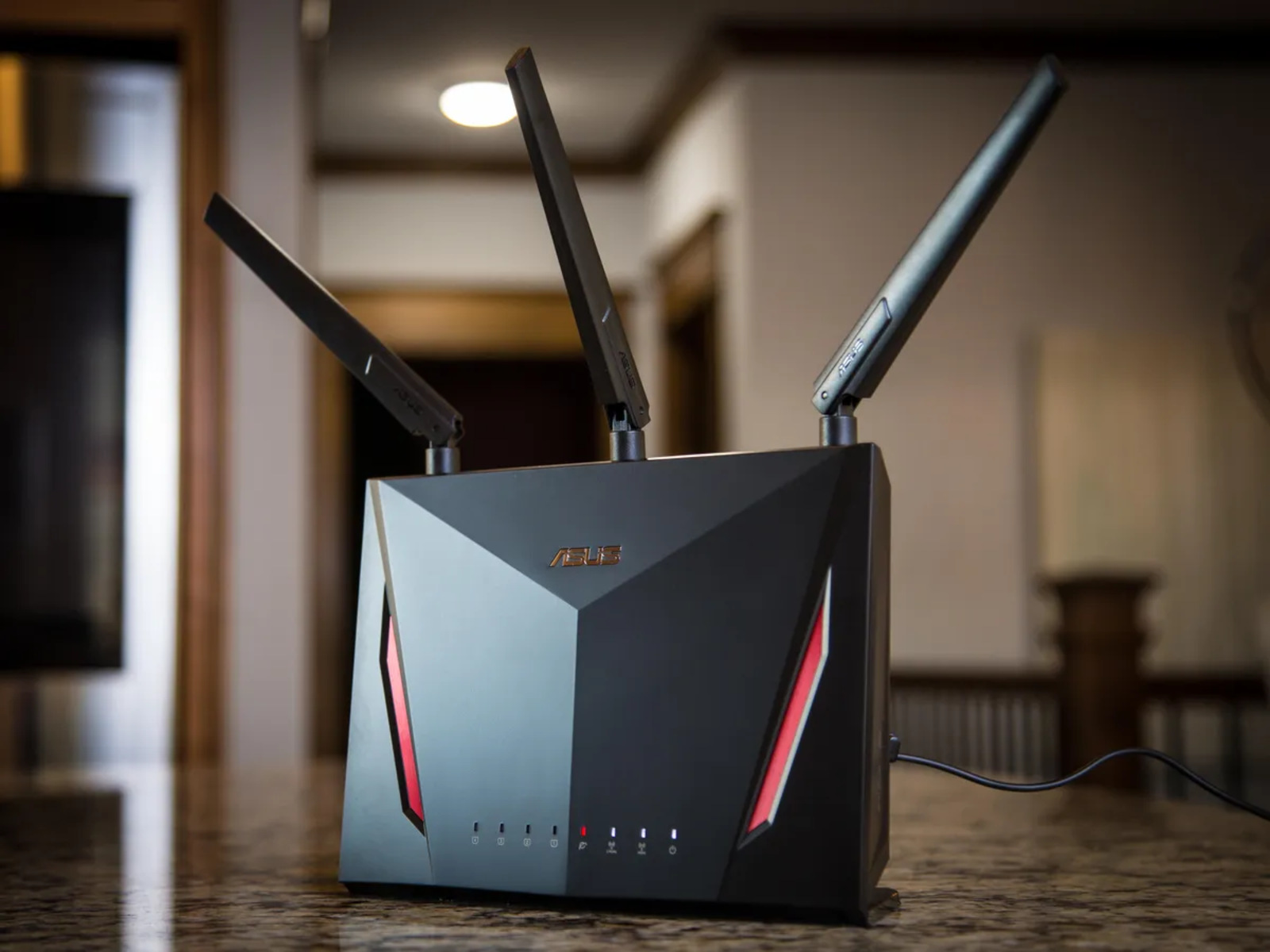Introduction
A router is an essential device that connects your devices to the internet and allows you to create a local area network (LAN) in your home or office. While most people are familiar with using their routers to access the internet, many are unaware of the settings and configurations available to them. Knowing how to access and navigate your router’s settings can greatly enhance your internet experience and allow you to customize your network to your specific needs. In this article, we will explore the process of accessing your router’s settings, as well as the various options available within the settings menu.
Understanding your router’s settings is beneficial for several reasons. Firstly, it allows you to secure your network by setting up a strong password and enabling encryption protocols. Secondly, you can optimize your network performance by configuring network and Wi-Fi settings, such as channel selection and signal strength. Additionally, accessing your router’s settings enables you to set up advanced features like port forwarding, parental controls, and quality of service (QoS) settings, which can enhance your online gaming experience or prioritize certain types of internet traffic.
Before diving into the details, it’s important to note that the process of accessing your router’s settings may vary depending on the make and model of your router. However, the general steps we will outline should be applicable to most routers on the market. If you encounter any discrepancies or difficulties, consult the user manual provided by the manufacturer or visit their support website for specific instructions.
Now that we understand the importance of accessing our router’s settings, let’s move on to the first step: finding your router’s IP address.
What is a router and why do I need access to its settings?
A router is a hardware device that acts as a central hub for connecting multiple devices to a network and facilitating communication between those devices. It serves as a bridge between your local network and the internet, allowing devices such as computers, smartphones, and smart home devices to access the internet and communicate with each other.
While routers are designed to work right out of the box, accessing their settings gives you more control and customization options. Here are a few reasons why you might need to access your router’s settings:
- Network Security: By accessing your router’s settings, you can set up a strong password to protect your network from unauthorized access. You can also enable encryption protocols, such as WPA2, to secure the data being transmitted over your network.
- Wi-Fi Optimization: Your router’s settings menu allows you to configure various Wi-Fi settings to improve performance and coverage. You can change the channel your Wi-Fi operates on to reduce congestion, adjust the signal strength, and set up guest networks to separate your main network from visitors.
- Port Forwarding: If you are running services or applications that require incoming connections from the internet, such as online gaming or hosting a website, you will need to set up port forwarding. This feature allows you to direct incoming traffic to the appropriate device on your network.
- Parental Controls: Accessing your router’s settings enables you to set up parental controls, allowing you to restrict access to certain websites or block specific devices from accessing the internet during certain times. This feature can be helpful for managing internet usage and ensuring a safe online environment for children.
- Firmware Upgrades: Router manufacturers often release firmware updates to improve performance, add new features, or address security vulnerabilities. By accessing your router’s settings, you can check for updates and upgrade to the latest firmware to ensure your router is running smoothly.
Having access to your router’s settings puts you in control of your network, allowing you to customize and optimize it according to your needs. However, it’s important to proceed with caution when making changes to your router’s settings, as incorrect configurations can disrupt your network’s functionality. Always refer to the manufacturer’s documentation or seek assistance if you are unsure about specific settings or their implications.
Finding your router’s IP address
In order to access your router’s settings, you will need to know its IP address. An IP address is a unique identifier assigned to each device on a network. Here are a few methods to help you find your router’s IP address:
- Check the router’s documentation: The user manual or documentation that came with your router usually contains the default IP address. Look for a section titled “Accessing the router settings” or a similar heading.
- Check the router itself: Some routers have their IP address printed on a sticker located on the bottom or back of the device. Check for any labels or markings that mention the router’s IP address.
- Use the command prompt (Windows): If your computer is connected to the router, you can find the IP address through the command prompt. Press the Windows key + R to open the Run dialog box, then type “cmd” and press Enter. In the command prompt window, type “ipconfig” and press Enter. Look for the “Default Gateway” under the appropriate network adapter, which represents your router’s IP address.
- Use the network settings (Mac): On a Mac, click on the Apple menu in the top-left corner, select “System Preferences,” then click on “Network.” Choose your active network connection (Ethernet or Wi-Fi) and click on the “Advanced” button. Go to the “TCP/IP” tab and look for the “Router” field, which displays your router’s IP address.
- Use a network scanning tool: If the above methods don’t work, you can use a network scanning tool like Advanced IP Scanner or Angry IP Scanner to scan your network and identify all connected devices, including your router. These tools will display the IP addresses of all devices on your network.
Once you have obtained your router’s IP address, you can proceed to the next step, which is logging into your router using a web browser.
Logging into your router
After discovering your router’s IP address, you can proceed to log into your router’s settings using a web browser. Here’s a step-by-step guide to help you get started:
- Open a web browser: Launch your preferred web browser on a device that is connected to the same network as your router.
- Enter the router’s IP address: In the address bar of your web browser, type in the router’s IP address that you previously found. Make sure to enter the IP address correctly, including the periods.
- Press Enter: Hit the Enter key to navigate to the router’s login page.
- Enter the login credentials: On the login page, you will be prompted to enter the username and password to access your router’s settings. This information is typically found in the router’s documentation or on a sticker on the router itself. If you have never changed the default credentials, you can try using common default usernames and passwords provided by the router manufacturer.
- Click Login or Submit: Once you’ve entered the correct username and password, click on the Login or Submit button to proceed.
Note that the login page and the specific steps may vary slightly depending on the router brand and model. Some routers may also give you the option to set up a custom username and password during initial setup.
If you are unable to log in to your router using the default login credentials or have forgotten the custom credentials you set up, you may need to perform a factory reset on the router. Refer to the router’s documentation for instructions on how to reset it to its default settings. Keep in mind that performing a factory reset will erase all your custom settings and configurations.
Once you have successfully logged into your router, you will have access to the settings menu, where you can make changes and customize your network to your liking. In the next section, we will explore the various options available within the settings menu.
Exploring the router settings menu
Once you have logged into your router, you will be greeted with the settings menu, which is where you can make changes and customize various aspects of your network. While the specific options and layout may vary depending on your router’s brand and model, here are some common settings you are likely to encounter:
- Network Settings: This section allows you to configure basic network settings such as the SSID (network name), network mode (e.g., 802.11ac), and channel selection. You may also find settings related to DHCP (Dynamic Host Configuration Protocol), which controls how IP addresses are assigned to devices on your network.
- Wireless Settings: Here, you can fine-tune your Wi-Fi settings, including the wireless security mode (e.g., WPA2), encryption type, and password. You may also have options to adjust the signal strength, enable or disable guest networks, and manage connected devices.
- LAN Settings: This section allows you to configure settings related to the local area network. You can change the IP address range, subnet mask, and DHCP server settings. Advanced options may include VLAN (Virtual Local Area Network) setup, which allows segmentation of the network for better security and performance.
- Port Forwarding: This feature allows you to redirect incoming network traffic to a specific device on your network. It is commonly used for hosting servers, accessing remote desktops, or running applications that require incoming connections from the internet. You’ll need to specify the application or service, the internal IP address of the device, and the port numbers to set up port forwarding.
- Parental Controls: If you have children or want to restrict access to certain websites or online content, this section allows you to set up parental controls. You can block specific websites or categories, set time restrictions, and create user profiles with customized access permissions.
- Quality of Service (QoS): QoS settings allow you to prioritize certain types of internet traffic to ensure a smooth and lag-free experience for specific applications or devices. For instance, you can prioritize online gaming or video streaming by allocating more bandwidth to those devices or services.
These are just a few examples of the settings you may encounter in your router’s settings menu. The layout and available options may vary, so explore each section carefully to familiarize yourself with the specific features and customization options offered by your router.
It’s important to mention that making changes to the router settings should be done with caution to avoid disrupting your network’s functionality. If you are unsure about a particular setting or its implications, consult the router’s documentation or seek assistance from the manufacturer’s support resources.
In the next section, we will delve into specific configurations and settings that can further enhance your network experience, such as network and Wi-Fi optimizations, port forwarding, parental controls, and firmware upgrades.
Configuring network and Wi-Fi settings
One of the essential aspects of router settings is configuring your network and Wi-Fi settings. This allows you to optimize the performance and security of your network, customize your Wi-Fi network, and manage device connectivity. Here are some key settings you should consider:
- Network Mode: Your router may support different network modes, such as 802.11n or 802.11ac. Selecting the appropriate mode based on your devices’ capabilities can improve Wi-Fi speed and coverage.
- SSID (Network Name): Customizing your network’s name makes it easily identifiable. Avoid using personally identifiable information and choose a unique name that doesn’t reveal too much about your network.
- Wireless Security: Set up strong encryption protocols like WPA2 for secure data transmission over your Wi-Fi network. Create a unique and strong password that is difficult to guess.
- Channel Selection: Wi-Fi signals can overlap if neighboring networks use the same channel, causing interference and decreased performance. Choose an optimal channel that has the least interference for better Wi-Fi performance.
- Signal Strength: If you have dead spots or weak Wi-Fi signals in certain areas of your home or office, you can adjust the signal strength to extend the coverage. Experiment with different settings to find the best balance between coverage and performance.
- Guest Networks: Enable guest networks if you frequently have visitors who require internet access. This allows guests to connect to a separate network, ensuring that your main network remains secure and private.
- Device Connectivity: Some routers allow you to manage and control device connectivity. You can assign static IP addresses to specific devices, limit the number of devices connected to your network, or prioritize certain devices for better performance.
By configuring network and Wi-Fi settings, you can enhance the performance, security, and usability of your network. Additionally, these settings can help you resolve issues related to slow Wi-Fi, network congestion, or weak signals.
Remember, your router’s settings interface may vary, and you may find additional or different options specific to your router model. Take the time to explore each setting and make adjustments according to your needs.
In the next section, we will explore the process of setting up port forwarding, which is essential when hosting servers or running applications that require incoming connections from the internet.
Setting up port forwarding
Port forwarding is a configuration that allows incoming network traffic to be directed to a specific device or service on your local network. This is especially useful if you’re hosting servers, running applications, or accessing devices remotely from the internet. Setting up port forwarding involves the following steps:
- Identify the service or application: Determine which service or application requires port forwarding. This could be a web server, FTP server, gaming server, or any other service that requires incoming connections.
- Find the port numbers: Each service or application uses specific port numbers to communicate over the network. Consult the documentation or the settings of the service/application to identify the required ports.
- Access your router’s settings: Log in to your router’s settings using the IP address and the login credentials. Navigate to the port forwarding or virtual server (depending on your router) section in the settings menu.
- Add a new port forwarding rule: Create a new rule and specify the following information:
- Service or application name
- Internal IP address of the device hosting the service
- Protocol (TCP, UDP, or both)
- Start and end port numbers
- Enable the rule
- Save and apply the changes: After entering all the necessary details, save the port forwarding rule and apply the changes. Your router will now redirect incoming traffic on the specified ports to the appropriate device on your network.
It’s important to note that port forwarding exposes devices on your network to the internet, so it’s crucial to ensure that you have strong security measures in place, such as using secure protocols and setting up strong passwords.
If you’re unsure about the specific port numbers or how to set up port forwarding for a particular service or application, consult the documentation provided by the service/application or refer to online resources specific to your router model.
Now that you have learned how to set up port forwarding, the next section will discuss enabling or disabling parental controls to manage internet access and protect children from inappropriate content.
Enabling or disabling parental controls
Parental controls are an essential feature of routers that allow you to manage and restrict internet access for certain devices or users, ensuring a safe and age-appropriate online experience. Most routers provide options to enable or disable parental controls and offer various customization settings. Here’s how you can enable or disable parental controls:
- Access your router’s settings: Login to your router’s settings using the IP address and login credentials.
- Navigate to the parental controls section: Look for the section or tab related to parental controls in your router’s settings menu. The location and terminology may vary depending on your router model.
- Turn on parental controls: Enable or toggle the parental controls option to start configuring them.
- Create user profiles: If your router supports user profiles, create profiles for each family member or device that requires internet restrictions. Assign a custom name to each profile.
- Set time restrictions: Specify the timeframes for when internet access is allowed or restricted. You can define specific hours on certain days or block access during specific time periods.
- Filter or block content: Depending on the router model, you can set up content filtering options to block access to specific websites, categories of content, or age-inappropriate material.
- Create restrictions: You may have the option to set specific restrictions for individual user profiles or devices, such as blocking specific applications or limiting internet usage.
- Save and apply the changes: After configuring the desired parental control settings, save the changes and apply them to activate the restrictions.
Enabling parental controls helps limit exposure to inappropriate content, manage internet usage, and promote a healthy online environment. Remember to periodically review and update the settings as needed, considering the age and maturity of the users.
Keep in mind that parental controls set on the router level may not be as granular or effective as dedicated parental control software installed on individual devices. For more refined control, you may want to consider using additional software or applications specifically designed for parental controls.
Now that you understand how to enable or disable parental controls, the next section will discuss the importance of upgrading your router’s firmware for improved performance and security.
Upgrading your router’s firmware
Regularly upgrading your router’s firmware is essential for maintaining optimal performance, improving functionality, and addressing security vulnerabilities. Firmware is the software embedded in your router that controls its operation. Manufacturers periodically release firmware updates to fix bugs, enhance features, and address potential security risks. Here’s how you can upgrade your router’s firmware:
- Check for firmware updates: Visit the manufacturer’s website and search for firmware updates specific to your router model. Pay attention to the version number and release notes to ensure compatibility and understand the changes included in the update.
- Download the firmware: If a newer version of the firmware is available, download it from the manufacturer’s website. The file will typically be in a compressed format like .zip or .rar.
- Access router settings: Log in to your router’s settings using the IP address and login credentials.
- Locate the firmware upgrade section: Look for a section in the settings menu related to firmware or system updates. The exact location may vary, so refer to your router’s documentation for guidance.
- Upload the firmware file: Choose the downloaded firmware file from your computer and upload it to the router’s firmware upgrade section. Follow the on-screen instructions provided by your router’s interface.
- Start the upgrade process: Initiate the firmware upgrade process by following the prompts in your router’s interface. Avoid interrupting the process or powering off the router during the upgrade, as it may cause permanent damage to the router.
- Wait for the upgrade to complete: The upgrade process may take a few minutes. Once completed, the router will typically reboot to apply the new firmware.
It’s important to note that firmware updates may reset your router’s settings to their default values. Make sure to back up your current settings before proceeding with the firmware upgrade.
Keeping your router’s firmware up to date ensures that you have the latest bug fixes, security patches, and performance improvements. It can also provide access to new features and compatibility with emerging technology.
Make it a habit to periodically check for firmware updates and apply them as needed to keep your router running smoothly and securely.
In the next section, we will discuss troubleshooting common router problems that you may encounter and how to resolve them.
Troubleshooting common router problems
Like any electronic device, routers can occasionally encounter issues that can disrupt your internet connection or cause other network-related problems. Troubleshooting these common router problems can help restore connectivity and ensure smooth operation. Here are some common issues and steps to resolve them:
- No Internet Connection: If you are not able to connect to the internet, start by checking if the router’s lights are indicating a stable connection. Try restarting the router and modem, verifying the cable connections, and contacting your internet service provider (ISP) if the issue persists.
- Slow or Weak Wi-Fi Signal: If your Wi-Fi signal is weak or the speed is slow, consider repositioning your router to a central location, away from obstructions. Avoid interference from other electronic devices, and make sure your router is using the latest firmware. You may also consider upgrading to a newer router model with better coverage and speed.
- Difficulty Connecting to Wi-Fi: If you’re having trouble connecting to your Wi-Fi network, ensure that you’ve entered the correct password. Restart your device’s Wi-Fi, verify the Wi-Fi settings on your router, and check if any MAC address filtering or access control lists are causing issues.
- Intermittent Connectivity: If your connection is unstable or frequently disconnects, try changing the wireless channel on your router to avoid interference from neighboring networks. Ensure that the router is in a location with good airflow and is not overheating. Resetting the router or updating the firmware may also help resolve intermittent connectivity issues.
- Router Setup Issues: If you’re setting up a new router, ensure that the cables are securely connected and the modem is properly bridged or connected. Follow the manufacturer’s setup instructions carefully and verify that the login credentials are correct. Resetting the router and starting the setup process afresh can sometimes resolve setup-related issues.
- Device Connection Problems: If specific devices are unable to connect to your network, verify that their Wi-Fi adapters are working correctly. Consider updating the device’s drivers or firmware. Resetting the network settings on the device or restarting the router can also help resolve device connection issues.
- Unresponsive Router: If your router becomes unresponsive, try power cycling it by unplugging the power supply, waiting for a few seconds, and then plugging it back in. If the issue persists, try performing a factory reset, following the manufacturer’s instructions. Note that a factory reset will erase all custom settings, so be sure to back up your configuration if possible.
If the above troubleshooting steps don’t resolve the issue, consult your router’s documentation or contact your router’s manufacturer or technical support for further assistance.
By troubleshooting common router problems, you can quickly diagnose and resolve issues to ensure a reliable and stable internet connection.
Now that we’ve covered troubleshooting, let’s recap what we’ve learned in the next section.
Conclusion
In this article, we explored the importance of accessing your router’s settings and the various options available to customize and optimize your network. We learned how to find your router’s IP address, log into the router, and navigate the settings menu. We discussed the significance of configuring network and Wi-Fi settings, setting up port forwarding, enabling or disabling parental controls, upgrading router firmware, and troubleshooting common router problems.
Accessing your router’s settings gives you the ability to secure your network, optimize Wi-Fi performance, set up advanced features like port forwarding, and manage internet access with parental controls. Additionally, upgrading your router’s firmware ensures that you have the latest bug fixes, security patches, and improvements.
While the specific steps and options may vary depending on your router model, understanding the general principles outlined in this article will empower you to make the most out of your router and create a reliable and secure home or office network.
Remember to refer to the manufacturer’s documentation or support resources for your specific router model if you encounter any difficulties or require further assistance.
By utilizing the knowledge gained from this article and staying proactive in managing your router’s settings, you can enhance your internet experience, improve network performance, and ensure a safer and more customized online environment for yourself and your devices.









